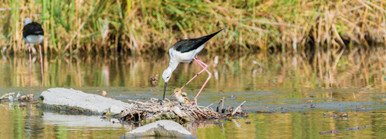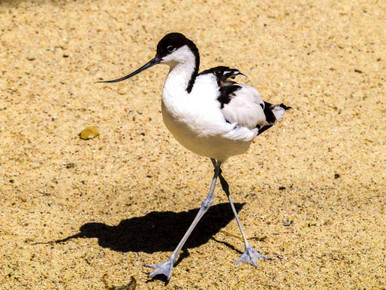The Kennedy Wild Bird Food Guide to the Avocet
The avocet, a once extinct bird with a bold black ‘cap’ and contrasting white coat, is worn proudly on the emblem of the RSPB and has symbolised the bird protection movement in the UK since its reintroduction back in the 1940s. Its increase in numbers is one of the highest-profile conservation success stories in recent history. This one is a real survivor! Avocets feed on aquatic insects, crustaceans and worms, catching them with a really unique sweeping motion (the avocet will dunk its bill into the water, sweeping from side to side until it catches something). Its upturned beak helps! They’re quite sociable birds and are often seen in large flocks.
Does the avocet have many predators?
Avocets are quite a big bird, so it doesn’t have that many predators to defend itself from. Avocet chicks (and the eggs) are sometimes preyed upon by the likes of dogs, cats, and weasels.What does an avocet bird look like?
 The avocet has a distinctive upturned bill and is mainly white, with black patches on the back and wings. Perhaps the first thing you’ll notice is its black cap that stretches from the top of their heads down the back of their neck.
The avocet has a distinctive upturned bill and is mainly white, with black patches on the back and wings. Perhaps the first thing you’ll notice is its black cap that stretches from the top of their heads down the back of their neck.
What does the avocet’s song sound like?
The song of an avocet is a short, sharp sound like a low whistle that intermittently sounds and is almost over before it began. Click on the video below to hear the avocet call for yourself! Click here to listenBreeding habits
The avocet’s breeding habits were closely monitored following their revival, and there is plenty of information about how they breed. They’re widely regarded as open ground breeders, and they prefer areas close to water. Around four eggs are laid, after which both parents work together to incubate. A month or so later, the eggs hatch. The chicks are nursed (again, by both parents - teamwork!) for four to six weeks until they fly the nest.
What do avocets eat?
We mentioned earlier that the avocet primarily eats invertebrates (insects, crustaceans, and worms). If you’re looking to attract avocets to your area, explore our range of wild bird food including live food and seeds.Where can I see an avocet?
In summer, you’ll see avocets along the East Coast. In winter, you’ll see them along the South West. The Exe estuary (Devon) is also an excellent place to find them. Remember - if you do spot an avocet, make sure you log it in our Birdspotter app!
